When I was in high school, there were these crochet lace shorts that were super popular amongst my friends. I remember looking at them and saying to myself, “I could make something similar with a crochet hook and yarn.” To do so, I researched different yarns best for shorts and eventually settled on crochet thread, a lace weight yarn.
According to yarn weight standards, lace weight is the thinnest yarn available. Because of its thin and delicate nature, the resulting fabric is light and airy, with a lot of drape. Shawls, accessories, and lightweight garments are common projects made from lace weight yarn.
My crochet lace shorts were probably one of my first projects that introduced me to the difference in yarn weights. Unfortunately, I never got around to finishing them. But I learned a valuable lesson: yarn weight correlates to the type of project. By the end of this article you will know what I mean.
The photos at the top are examples of lace weight yarn. If you’d like to snag the free patterns, click the links: Maeva by Julia-Maria Hegenbart, Feather and Fan Scarf by Kelly Faller, and Whisper Wrap by Purl Soho.
Lace Weight Yarn Standards
The Craft Yarn Council (CYC) created a standard yarn weight system for the US. It is based on a number system that starts from 0, the thinnest, and goes up to 7, the thickest. Lace weight yarn is what the CYC considers a 0. Besides the numbering system, the CYC also gives guidelines for gauge and hook and needle sizes for lace weight yarn.
CYC Gauge and Tool Recommendations
Gauge, hook and needle suggestions for knit and crochet are printed on yarn labels. These are based on the testing done by yarn manufacturers.
But the CYC put a set of guidelines for everyone (in the US) to use, which is listed below. The information is based off of the CYC website and you can access that here for more details.
| Standard CYC Gauge* | CYC Recommended Tool Size | |
| Knit | 33 – 40 sts stockinette | 1.5 – 2.25mm, 000-1(US) needles |
| Crochet | 32 – 42 sts dc | 1.6 – 1.4mm, 6 – 8(US) steel hook, 2.25mm, B-1 regular hook |
Ravelry (an online database for crochet and knitting patterns) also provides a guideline for knit gauge. According to them, you should get between 32-34 stitches per 4 inches (10 cm). You can see that this is in align with what the CYC says.
Remember though, these are not exact. The gauge and hook/needle size provide you with a strong baseline, but you should always do your own testing.
Wraps Per Inch
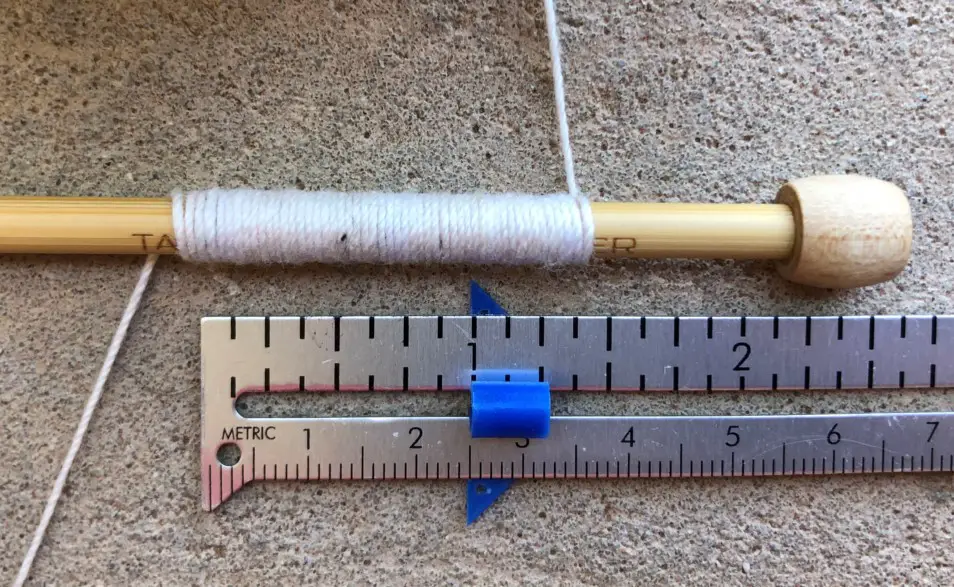
Wraps per inch (WPI) is useful for yarn weights if you ever lose your labels. Measuring WPI is super simple. The CYC has more detailed information on their website here. But basically you wrap yarn around a pencil. Then you measure an inch and count how many wraps are in that inch. Finally, you compare to the CYC WPI standards to know what the yarn weight is.
The CYC states that lace weight (0) yarn should have 30 or more wraps per inch. I looked at another reputable website, Bluprint. They say lace weight is 35 or more WPI, which aligns with the CYC.
I tested this out on the #10 crochet thread that I had on hand (pictured above). I got approximately 37 wraps per inch, which is exactly in line with both the CYC and Bluprint.
Other Common Terms for Lace Weight Yarn
As I mentioned previously, the CYC created the yarn weight system for the US. Lace weight is equivalent to a 0 according to their standards. But not everyone in the world uses the same terminology. I summarized the most common terms used for lace weight yarn below, and I will go into more detail about each.
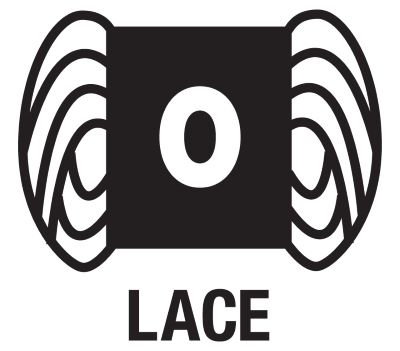
Also Known As
- Lace – 0
- Thread
- Crochet Thread
- Cobweb
- Light Fingering
- 1-ply
- 2-ply
- 3-ply
Ravelry has four separate categories that are all lace weight (0) yarn. They created a more detailed standard yarn weight system since they have users from around the world.
In the US, and other countries, lace weight is also commonly called thread, crochet thread, cobweb, or light fingering yarn.
- Lace – 0. This is how the Craft Yarn Council refers to the thinnest weight yarn. The symbol above is what is printed on yarn labels in the US so that you can easily identify the yarn weight.
- Thread or crochet thread. A category of lace weight yarn, but has its own subcategories. Crochet thread is sized from 3-30. The higher the number, the thinner the thread.
- Cobweb. Probably the finest yarn available that is typically made of one ply.
- Light fingering. Fingering yarn is the next thickest yarn, so light fingering refers to the size below fingering weight yarn.
The UK, Australia and New Zealand tend to refer to yarn weights by plies. The lower the ply count, the thinner the yarn. Although, don’t confuse this with how many plies the yarn is actually composed. Ply count used to refer to the number of strands in the yarn, but modern processes have changed that. Now the term ply simply means the thickness of the yarn.
I looked at several sources to hopefully give the most accurate information, as I live in the US and don’t use this notation for yarn weights. This is what I found
- 1-ply. The UK and New Zealand typically use this term to refer to lace weight yarn.
- 2-ply. Australia commonly uses this term to mean lace weight yarn. New Zealand often uses 2-ply too.
- 3-ply. Ravelry has this listed next to light fingering, which is a subcategory of their lace weight standard. According to them, the UK, NZ and AU also refer to lace as 3-ply.
If you live in one of the areas that uses ply to determine yarn weight, please let me know if I should update this section!
Important Properties of Lace Weight Yarn
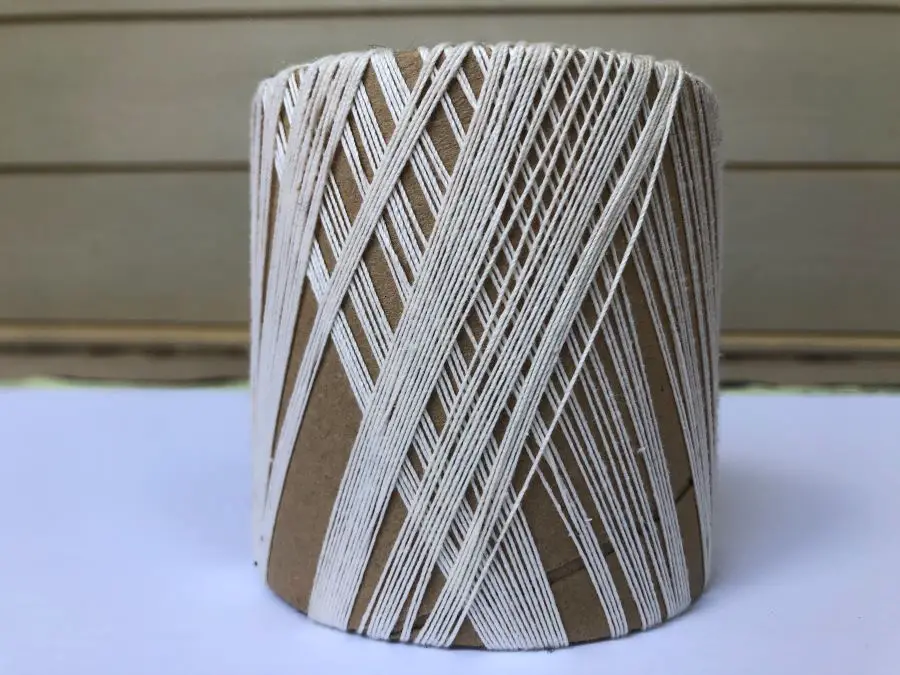
Lace weight yarn has several important properties that affect every purchaser of yarn. First there is the fiber content. It is important to know what fibers the yarn is made from so you know how to treat it for your projects. Next, the yardage is important because that affects the project size. Finally, the price of yarn is an important property that affects whether or not you buy it.
Throughout these next sections, I dive deeper into each property of lace weight yarn. In order to do so, I conducted my own research. I looked at five major yarn companies so I could understand more about industry behaviors regarding yarn weights. I hope you find it interesting!
Common Fiber Content
I like to break fiber content into three categories: natural fibers, synthetic fibers, and blends of natural and synthetic fibers. According to my research, 93% of lace weight yarn is made out of natural fibers. The other 7% is made from synthetic fibers. This makes sense because many big chain yarn companies do not have lace weight listed as a yarn option. Lion Brand is a simple example.
I found an interesting trend. Silk is the most common natural fiber added to a blend of other natural fibers to make up lace weight yarn. Common blends include silk and wool or silk and alpaca.
I have summarized the common fibers below. Keep in mind many of these are not usually 100%, except for cotton. Most of these fibers are blended together to create one yarn.
Natural Fibers
- Cotton
- Silk
- Wool
- Merino
- Mohair
- Alpaca
- Cashmere
Synthetic Fibers
- Polyester*
*Polyester was the only synthetic fiber I came across that was lace weight. And its suggested use was for combining with another strand to dres up projects.
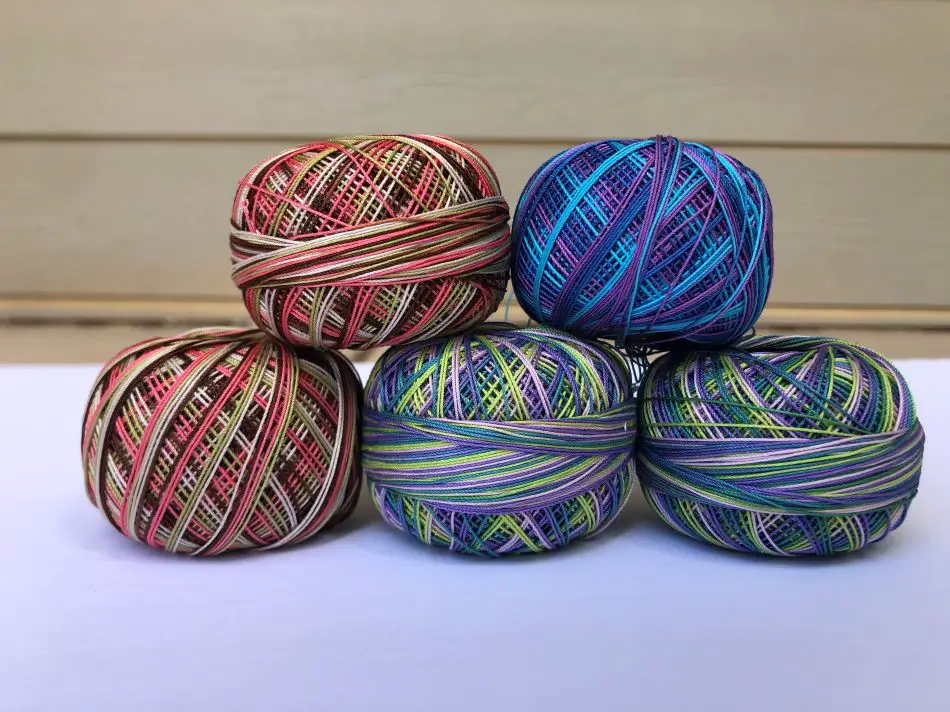
Yardage Estimation
When it comes to yardage, unfortunately there is no set standard for the amount of yards per ounce/gram. That is up to the yarn manufacturer. But I was curious, just as I am sure you are, how many yards I can expect on average for lace weight yarn. This is super important when planning for a pattern.
As I stated before, I looked at 5 major yarn companies in the US. The following is based on my research. For lace weight yarn , you can expect 565 yards per skein on average. The lowest amount of yardage I came across was 260 yards and the highest was 984 yards.
Average Price
Price is also an important aspect to keep in mind when you are choosing and comparing yarn. I found that you can expect to pay on average $11.14 per skein of lace weight yarn. Of course, that also means you could pay much more or less depending on where you shop.
Where to Find Lace Weight Yarn
Lace weight yarn can be found in a few places. Most chain craft stores will carry crochet thread, a category 0 yarn. I have not ever found any other types of lace weight yarn though. Color choice is usually limited too.
If you have locally owned yarn shops in your area, they may be a better option than a big box craft store. I unfortunately don’t have this luxury, so I can’t be 100% certain this is the case.
Finally, you can buy lace weight yarn online, which is probably your best bet. There are many yarn retailers that have lace weight yarn for sale. The only drawbacks are that you must wait for it to arrive and that shipping is an added cost.
Types of Projects Best for Lace Weight Yarn
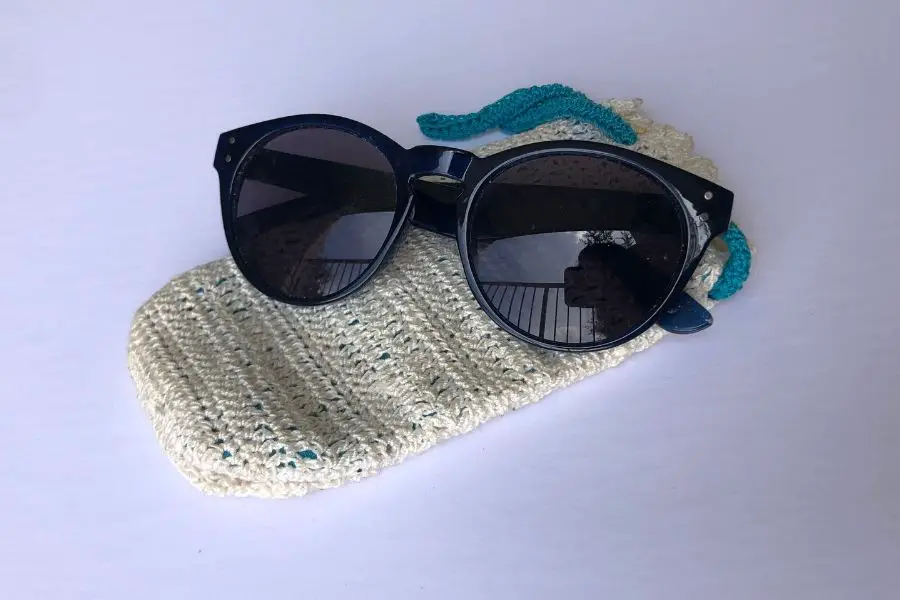
Lace weight yarn will produce a high quality and elegant piece of fabric due to its thin and delicate nature. However, the yarn can be difficult to work with because it is so thin. With that being said, projects of all sizes work well with lace weight yarn.
Ravelry has a total of 78,169 patterns (at the time of this post) that use lace weight yarn. And over 17,000 of those are free! You will no doubt find a project that you like.
Keep in mind that most projects will be lacey and have gaps in the fabric. For this reason, lace weight yarn is perfect for lightweight garments, shawls, accessories, and decorative pieces.
I compiled a list of all the project types that I could think of that pair well with lace weight yarn. You are by no means limited to only these projects, but I hope these spark inspiration!
Garments
- Baby Clothes
- Socks
- Scarf
- Shawl
Home Decor
- Doilies
- Table Runners
- Ornaments
- Coasters
- Dreamcatcher
- Tablecloth
- Book Mark
Accessories
- Headband
- Earrings
- Bracelet
Lace Weight Yarn Recommendations + Tips
I’ll be honest with you, I haven’t dabbled much with lace weight yarn. I tried to make my own pair of shorts from crochet thread and I’ve made a few doilies. So I can recommend Aunt Lydia crochet thread, which can be found at Joann or other major craft stores.
Tips:
- Try holding two strands together for a heavier weight yarn. It becomes more of a fingering weight yarn, which is the next thickest yarn size.
- You can also hold two strands of a different color together to create a marled look.
- Lacework will need to be blocked for the best results.
- Gauge is flexible. For a tight, opaque fabric, use a small needle or crochet hook. For a more open, lacey fabric, use a large needle or crochet hook.
- If you mess up, unravel your work carefully. The fine strands of yarn can break easily if pulled too hard. The yarn can also get very tangled in a flash. So frog your work methodically.
Up Next
That concludes Lace Weight yarn (0). The next post covers Superfine Weight yarn (1), which is the next size up of yarn. Find the article here.
The pictures listed at the top of the post are available in pattern form for free through Ravelry. I do not claim the photos as my own, they are merely for illustration purposes. Click the links here to access them: Maeva, Feather and Fan Scarf, Whisper Wrap.



